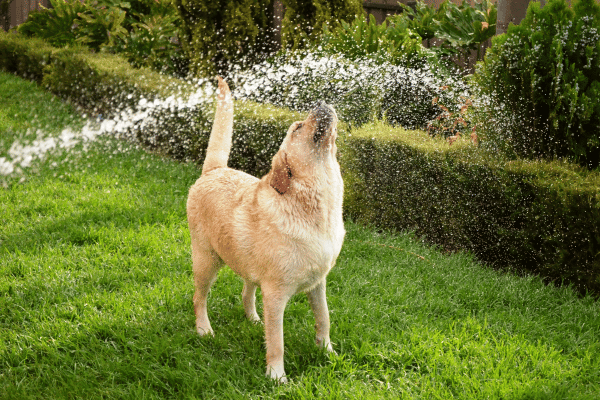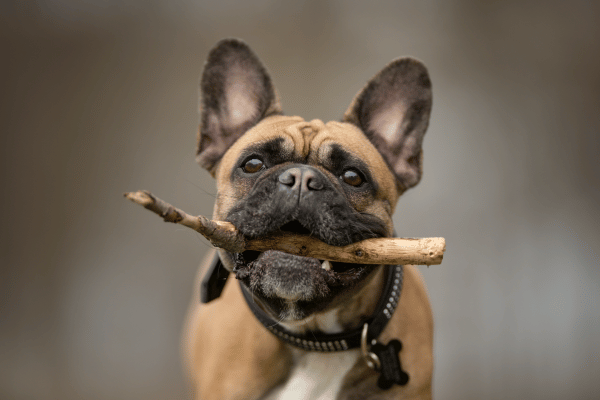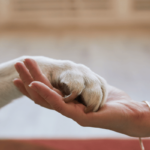Understanding your dog’s exercise needs by breed is crucial for their health and happiness. This guide offers insights into optimizing these needs for various breeds.
Tailoring Workouts to Your Dog’s Breed Needs

Every dog breed has unique exercise requirements. For instance, active breeds like Labradors thrive on vigorous activities, while Bulldogs need moderate exercise due to their build. It’s essential to recognize these differences to maintain your dog’s health. Additionally, consider their age and health status. Puppies and senior dogs have different energy levels and capabilities. Therefore, adjusting the intensity and duration of exercise is key to keeping them fit and happy.
Besides physical exercise, mental stimulation is equally important. Breeds like Border Collies and Australian Shepherds benefit greatly from mental challenges alongside physical activities. Incorporating training sessions, puzzle toys, and interactive games can significantly enhance their well-being. This approach not only keeps them physically active but also mentally sharp. Remember, a bored dog can develop destructive behaviors, so engaging their mind is as important as exercising their body.
Safety during exercise is paramount. Always monitor your dog’s response to physical activities. Signs of exhaustion or discomfort mean it’s time to take a break. In hot weather, avoid intense exercise to prevent heatstroke. Likewise, in cold conditions, ensure your dog is adequately protected against the cold. Regular vet check-ups are advisable to tailor the exercise regime to your dog’s health needs, ensuring a balanced and safe workout routine.
Balancing Exercise with Breed-Specific Health Concerns
Understanding breed-specific health concerns is crucial in tailoring exercise routines. For example, breeds prone to hip dysplasia, like German Shepherds, require careful exercise planning. Low-impact activities such as swimming can be beneficial, reducing stress on joints while providing good physical exercise. Similarly, breeds with respiratory issues, like Pugs, need shorter, less strenuous activities. It’s about finding the right balance that accommodates their physical limitations while still keeping them active and healthy.
Consistency in exercise routines is key, especially for high-energy breeds. Breeds like the Siberian Husky or the Dalmatian require regular, vigorous exercise to maintain their physical and mental health. Without consistent activity, these breeds can become restless and develop behavioral issues. On the other hand, breeds with lower energy levels, like the Basset Hound, benefit from shorter, more frequent walks. Tailoring the exercise schedule to your dog’s energy level and breed characteristics is essential.
Seasonal changes also impact exercise routines. During warmer months, breeds with thick coats, such as Alaskan Malamutes, need special attention to avoid overheating. Early morning or late evening walks, when it’s cooler, are advisable. Conversely, in colder months, short-coated breeds like Greyhounds may require protective clothing to stay warm. Adapting exercise routines to the changing seasons ensures your dog stays comfortable and healthy throughout the year, regardless of weather conditions.
Dog Exercise Needs by Breed: Seasonal Adaptations
Adapting exercise routines to your dog’s breed and the current season is vital. For instance, during summer, breeds like Bulldogs, who are prone to overheating, require shorter, less intense exercise sessions. Providing ample water and shade is essential. In contrast, winter might be more challenging for short-haired breeds like Chihuahuas, who might need extra warmth through clothing. Understanding and adjusting to these seasonal needs ensures your dog’s exercise routine is both safe and effective year-round.
Exercise isn’t just about physical health; it’s also about bonding and behavioral development. Engaging in activities that both you and your dog enjoy can strengthen your relationship. Breeds like Retrievers often enjoy fetch and water-based activities, while Hounds may prefer scent games. Tailoring activities to your dog’s natural inclinations not only meets their physical needs but also provides emotional fulfillment, reducing anxiety and strengthening the bond between pet and owner.
Lastly, remember that every dog is an individual, even within breeds. While breed-specific guidelines are helpful, observing and understanding your dog’s unique personality and preferences is crucial. Some may prefer longer walks, while others might enjoy short bursts of play. Regularly assessing and adapting to your dog’s changing needs as they age is also important. This personalized approach ensures that your dog’s exercise needs are met in a way that maximizes their health and happiness.
Incorporating Variety in Your Dog’s Exercise Routine

Variety is the spice of life, and this holds true for your dog’s exercise routine. Different breeds enjoy different activities, and even within the same breed, preferences can vary. For example, a Border Collie might excel in agility training, while another might prefer herding exercises. Introducing a variety of activities can prevent boredom and keep your dog engaged. This could include alternating between walks, runs, fetch games, and even dog sports, depending on your dog’s breed and interests.
It’s also important to consider the mental aspect of exercise. Breeds like the intelligent Poodle or the inquisitive Beagle benefit greatly from mental stimulation. This can be achieved through training sessions, puzzle toys, or hide-and-seek games. These activities challenge their minds, providing a much-needed mental workout alongside physical exercise. This holistic approach to exercise not only keeps them physically fit but also mentally sharp, preventing behavioral issues related to boredom or under-stimulation.
Adapting to your dog’s life stage is crucial. Puppies, adults, and senior dogs have different exercise needs. Puppies have bursts of energy but require short, frequent play sessions to avoid overexertion. Adult dogs might enjoy longer, more intense activities. Senior dogs, on the other hand, benefit from gentle, low-impact exercises like leisurely walks or light play. Understanding and respecting these life stages ensures that your dog’s exercise routine is appropriate for their age and physical condition.
Prioritizing Safety in Breed-Specific Exercise Plans
Safety should always be a top priority when exercising your dog, especially considering breed-specific vulnerabilities. For instance, brachycephalic breeds like Pugs and Bulldogs require careful monitoring during exercise to prevent respiratory distress. Similarly, large breeds prone to joint issues, such as Great Danes, should avoid high-impact activities that could exacerbate these conditions. By understanding and respecting these breed-specific health considerations, you can ensure that your dog’s exercise routine is not only effective but also safe.
Regular health check-ups are integral to a safe exercise plan. A veterinarian can provide valuable insights into your dog’s health status and recommend appropriate exercises. This is particularly important for breeds with hereditary health issues. For example, a vet might suggest specific exercises to strengthen the hips of a Labrador prone to hip dysplasia. Regular vet visits help in tailoring a safe and effective exercise regimen that caters to your dog’s unique health needs.
Lastly, always be attentive to your dog’s signals during exercise. If they show signs of fatigue, pain, or discomfort, it’s crucial to adjust the activity accordingly. Providing adequate rest periods and hydration, especially in extreme weather conditions, is essential. Remember, each dog has its own limits and tolerances, regardless of breed. Respecting these limits ensures that exercise remains a positive and healthy experience for your furry companion.
Enhancing Mental Health Through Exercise Routines
Exercise is not just about physical health; it plays a significant role in your dog’s mental well-being too. Breeds like the intelligent Border Collie or the energetic Jack Russell Terrier require not only physical activity but also mental stimulation. Activities like agility training, learning new tricks, or playing interactive games can greatly enhance their mental health. These exercises keep their minds active and engaged, preventing boredom and associated behavioral issues like anxiety or destructive behavior.
The environment in which you exercise your dog can also impact their mental health. Exploring new trails, parks, or beaches can provide sensory stimulation that is beneficial for breeds like the curious Beagle or the adventurous Husky. These experiences can satisfy their natural instincts to explore and sniff, offering mental enrichment beyond the confines of a backyard or standard walking path. Such environmental variety can make exercise more enjoyable and mentally stimulating for your dog.
Socialization is another key aspect of a dog’s mental health, particularly for sociable breeds like Golden Retrievers or Labradors. Incorporating playdates with other dogs or visits to dog parks can provide valuable social interaction. This not only allows them to exercise physically but also to engage socially, which is crucial for their overall well-being. Ensuring your dog has opportunities for socialization during exercise can significantly contribute to their mental and emotional health.
Customizing Exercise for Senior and Special Needs Dogs
As dogs age or face health challenges, their exercise needs change. Senior dogs, or those with special needs, require a customized approach to physical activity. Gentle exercises like slow walks or light play are ideal for older dogs. Breeds prone to arthritis, such as Labradors, may benefit from low-impact activities like swimming. It’s important to keep them moving to maintain muscle strength and joint flexibility, but without causing strain or discomfort.
For dogs with special needs, such as those recovering from surgery or with chronic illnesses, consult with a veterinarian to design a suitable exercise plan. This might include specific therapeutic exercises or modified activities. For example, a dog with heart disease may need short, gentle walks, while a dog with obesity might require a gradual increase in activity. Tailoring exercise to their specific needs helps in managing their condition while keeping them active.
Remember, the goal is to maintain quality of life. Regular, appropriate exercise can help senior and special needs dogs stay healthy and happy. It’s also a chance for them to continue bonding with their owners. Paying attention to their responses during exercise and making adjustments as needed is key. Always prioritize their comfort and well-being, ensuring that exercise remains a positive part of their daily routine.
Dog Exercise Needs by Breed: Adapting Techniques
Adapting exercise techniques to suit your dog’s breed is essential for their overall well-being. For high-energy breeds like Australian Shepherds, incorporating activities that challenge both their physical and mental capabilities is beneficial. This could include agility training or advanced obedience exercises. On the other hand, breeds with lower energy levels, such as the Shih Tzu, may prefer leisurely walks or short play sessions. Tailoring these techniques ensures that each breed’s exercise needs are met effectively.
The key to a successful exercise routine is understanding and respecting your dog’s limits. While some breeds can handle longer and more intense workouts, others may require shorter and more frequent breaks. Paying attention to signs of fatigue or discomfort during exercise is crucial. This approach helps in preventing injuries and ensures that the exercise is beneficial rather than harmful. Always aim for a balance that keeps your dog healthy and happy.
Finally, remember that your dog’s exercise needs may evolve over time. Regularly reassessing and adjusting their exercise routine as they age or as their health changes is important. This might mean introducing new activities or modifying existing ones. Keeping the routine dynamic and responsive to your dog’s changing needs will help maintain their interest in exercise and ensure their long-term health and happiness. It’s all about adapting to their evolving needs.
Fostering Lifelong Fitness in Diverse Dog Breeds
Fostering lifelong fitness in dogs starts with understanding the diverse needs of different breeds. Active breeds like the Vizsla or Weimaraner require robust, daily exercise to satisfy their high energy levels. This might include long runs, hikes, or playing fetch. Conversely, more laid-back breeds, such as the English Bulldog, benefit from shorter, less strenuous activities. Tailoring exercise to match your dog’s breed and energy level is crucial for their long-term health and well-being.
It’s also important to vary the types of exercise. This not only keeps your dog physically challenged but also mentally stimulated. Incorporating different activities like swimming, agility courses, or even simple games of hide-and-seek can provide a well-rounded exercise regimen. This variety helps in developing different muscle groups and prevents boredom. For breeds prone to specific health issues, such as Dachshunds, exercises that avoid strain on their backs are preferable.
Regular exercise is vital for preventing obesity, a common issue in many breeds. By maintaining a consistent exercise routine, you can help manage your dog’s weight and reduce the risk of health problems associated with obesity. This is especially important for breeds like Labradors, which are prone to weight gain. A combination of regular exercise and a balanced diet is key to keeping your dog healthy, active, and happy throughout their life.
Balancing Breed Needs with Individual Dog Personalities
While breed-specific exercise guidelines are helpful, it’s important to consider each dog’s individual personality. Some dogs may display energy levels or interests that differ from typical breed characteristics. For instance, a typically energetic Jack Russell Terrier might prefer more relaxed activities, or a typically laid-back Bulldog might show an unexpected love for long walks. Observing and responding to your dog’s unique preferences ensures that their exercise routine is both enjoyable and beneficial for them.
Flexibility in exercise routines is key. Be open to adjusting activities based on your dog’s response. If they seem bored with a certain activity, try something new. This could mean exploring different walking routes, introducing new toys, or even trying dog sports like flyball or dock diving. Keeping the exercise routine flexible and responsive to your dog’s reactions helps in maintaining their interest and enthusiasm for physical activity.
Finally, always prioritize your dog’s comfort and safety. If they show any signs of discomfort or reluctance during an activity, it’s important to reassess and modify the exercise plan. Remember, the goal is to enhance their quality of life through exercise, not to push them beyond their limits. A well-balanced exercise routine that takes into account both breed characteristics and individual preferences is essential for your dog’s long-term health and happiness.
In Summary
In summary, understanding and catering to your dog’s exercise needs by breed is fundamental for their overall well-being. From high-energy breeds like Labradors requiring vigorous activities to more laid-back breeds like Bulldogs needing moderate exercise, each breed has unique requirements. Incorporating a variety of physical and mental exercises tailored to these needs ensures a healthy, balanced lifestyle. Regularly adapting these routines to your dog’s changing age and health status is also crucial.
Encouragingly, the right exercise routine can significantly enhance your dog’s quality of life. It’s not just about physical health; it’s about bonding, mental stimulation, and preventing behavioral issues. We encourage you to explore different activities with your dog, observe their preferences, and adjust accordingly. For more insights and tips on dog care, visit our blog at DW Focus. Your feedback and experiences are valuable to us, so feel free to leave a comment!
Finally, remember that your commitment to your dog’s exercise needs is a testament to the love and care you have for your furry friend. By following these guidelines and staying informed about breed-specific needs, you can ensure a happy, healthy life for your dog. We invite you to share your stories and join our community of responsible pet owners dedicated to enhancing the lives of their beloved pets.
III. Frequently Asked Questions About Dog and Cat Breeds
- Is there any record of a dog ever crossing paths with a cat?While dogs and cats may interact or live together, there is no record of them breeding to produce offspring.
- Why can't a dog get a cat pregnant?Dogs and cats are different species with incompatible reproductive systems, making it impossible for them to interbreed.
- Are there breeds of dogs and cats that cannot reproduce naturally?Yes, certain breeds face challenges in natural reproduction due to physical conformation or health issues.
- Is there any record of a dog crossing paths with a cat?Dogs and cats often cross paths, especially in households where they live together as pets.
- Why can't a dog get a cat pregnant?The biological differences between dogs and cats prevent them from interbreeding.
- What is the origin of dog and cat breeds?Dog and cat breeds have been developed over centuries through selective breeding for specific traits and characteristics.
- Why are animals divided by breed?Animals are divided by breed to categorize the specific traits, characteristics, and lineage of a group of animals.
- What is the oldest breed of dogs and cats in the world?The Saluki is considered one of the oldest dog breeds, while the Egyptian Mau is one of the oldest cat breeds.
- What is the easiest dog breed to train?Border Collies are often cited as one of the easiest dog breeds to train due to their intelligence and eagerness to please.
- Are there breeds of dogs and cats that cannot reproduce naturally?Yes, some breeds may require assistance due to physical or health-related breeding challenges.

Join Dan Morgan at dwfocus.com, your hub for ‘4 paws and owners’ wisdom! Explore a world where pet care meets expert insights, crafted by Dan, a seasoned vet with a heart for animals. Engage with stories, tips, and advice that every pet owner needs. From playful pups to graceful cats, Dan Morgan guides you through the joys and challenges of pet parenting. Embrace your love for pets with Dan’s expert guidance on dwfocus.com. #4PawsAndOwners #DanMorganPetExpert #dwfocus







